Common Types of Vibration Isolators
The main vibration isolators used in engineering practice are metal spring isolator, wire rope isolator, rubber isolator, metal rubber isolator and air spring isolator.
1. Metal spring isolator
Metal spring vibration isolator is the earliest type of vibration isolator. Cylindrical coil spring isolator, conical coil spring isolator and butterfly spring isolator are widely used in engineering. Spring materials generally choose manganese steel, silicon manganese steel, chromium vanadium steel and so on. Because the steel spring has ideal elasticity, its stress and strain are linear in a large range, its material and structural parameters can be changed in a large range, and can meet the requirements of different loads, deformation and lower resonance frequency. In addition, the coil spring isolator has the advantages of low cost, no fear of corrosive environment and high temperature resistance. However, the coil spring isolator has a small damping, it can not provide enough damping to suppress vibration, and its medium and high frequency isolation performance is poor.
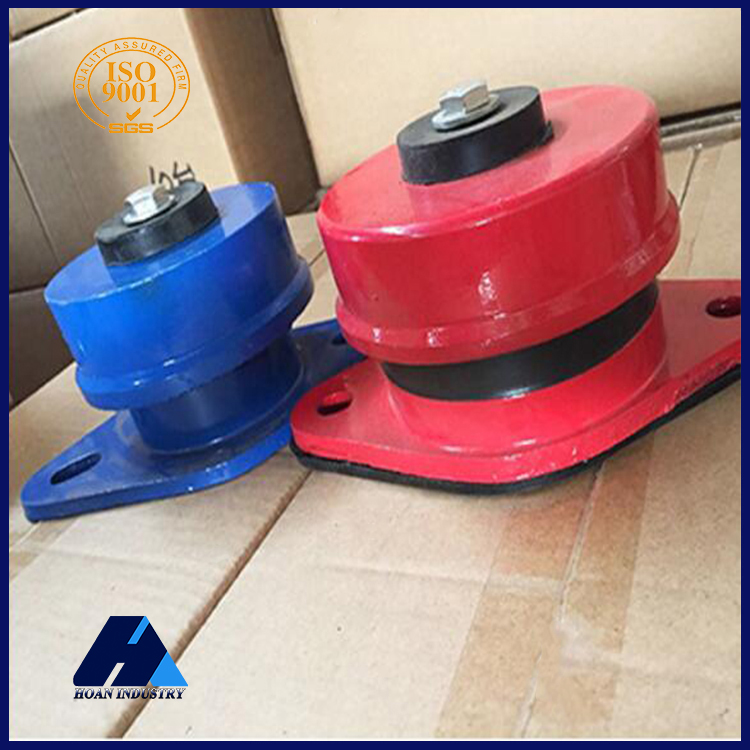
2. Rubber vibration isolator
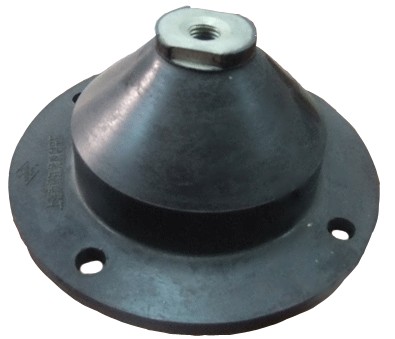
Rubber isolators are the most widely used type of isolators. It is widely used in the field of vibration isolation of locomotives, ships, automobiles, aircraft, bridges and instruments. Rubber isolator uses elastic deformation of viscoelastic damped structure to achieve vibration reduction, which converts vibration energy into internal friction energy of damped material, and has high conversion efficiency. It can be used in compression state or shear state. In application, if the parameters of rubber material and damping structure are selected reasonably, good vibration isolation can be achieved. As the most widely used isolator, rubber isolator has the following advantages:
(1) It can be vulcanized into various shapes to meet the requirements of space. The hardness can be controlled by adjusting the composition of the rubber formulation to meet the requirements of stiffness and strength in all directions.
(2) It has enough internal damping and is suitable for the case of small static displacement and short but large dynamic displacement. Its vibration isolation effect is good, which is conducive to crossing the resonance zone and attenuating high-frequency vibration and noise.
(3) The modulus of elasticity is much smaller than that of metal, which can produce larger elastic deformation.
(4) No sliding part, easy to maintain.
(5) Small quality, easy installation and disassembly.
However, in practical application, rubber isolators also have the following shortcomings:
(1) The resistance to high, low temperature and oil is inferior to that of metal materials.
(2) It can not be directly exposed to the external environment and is easy to aging.
(3) Creep and hysteresis will occur when applied to large loads for a long time.
(4) Vibration isolation performance is poor at low frequencies.
3. Wire rope isolator
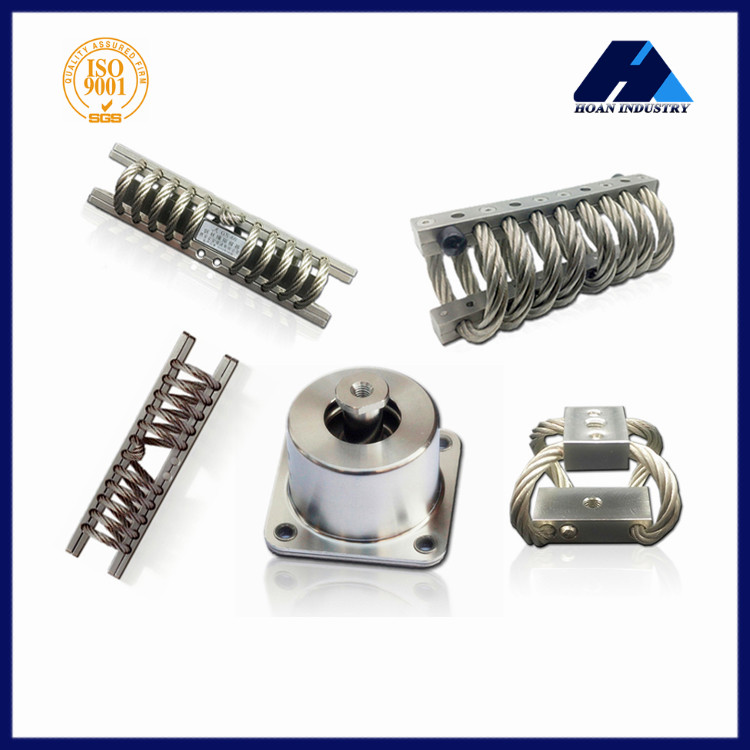
The wire rope isolator was first developed by the United States in the late 1970s. It is a typical non-linear vibration isolator. Its damping characteristic is related to deformation and has good vibration isolation performance. When the amplitude is large enough, the wire rope vibration isolator is a kind of vibration isolator which absorbs and dissipates vibration energy by dry friction damping between the strands of wire rope. When the amplitude is small, each strand of wire rope in the wire rope isolator does not produce dry friction damping, but relies on the elastic vibration isolation of wire rope components. Wire rope vibration isolator is a new generation of elastic elements. Its advantages have been gradually recognized by people, and have been proved in the practical use of warships, aerospace and other fields. The application prospect is very broad. The outstanding advantages are as follows:
(1) The three functions of vibration isolation, cushioning and noise reduction of high frequency structure are considered.
(2) Stainless steel wire rope and stainless steel splint are adopted, which can be used in harsh environment conditions.
(3) Stable performance, long service life, generally do not need to be replaced.
(4) Its unique rope structure restrains the high-frequency fluctuation effect which is difficult to avoid in common metal isolators.
(5) It has obvious non-linear characteristics, and has excellent characteristics in shock resistance and passive vibration isolation that other isolators can not achieve.
Wire rope isolator can produce large dynamic displacement, attenuate strong impact, and absorb and dissipate a large number of low-frequency and high-frequency vibration. However, the dry friction damping of the wire rope isolator is small, and the isolation effect is poor in resonance.
4. Metal rubber vibration isolator
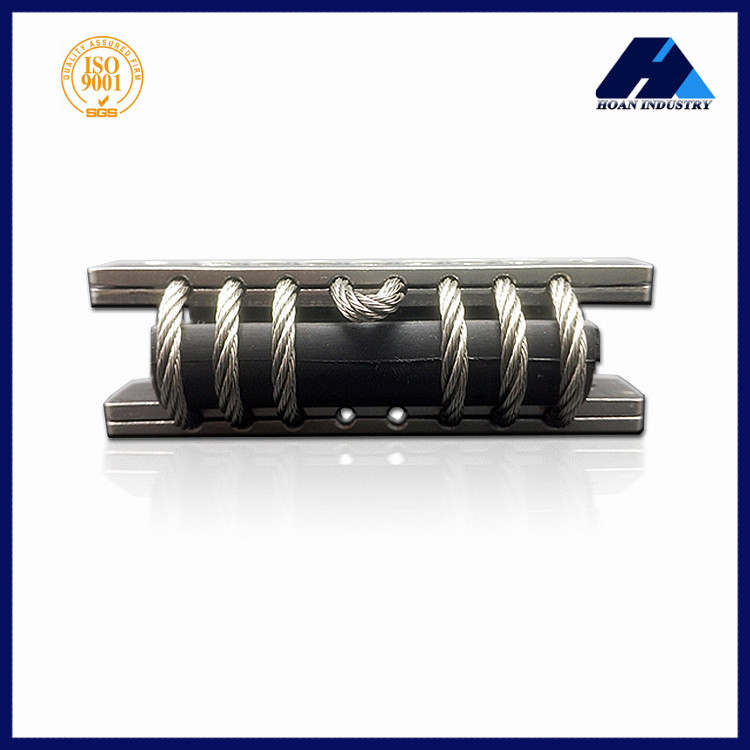
Metal rubber vibration isolator is a new type of vibration isolator. This new type of vibration isolator is made of metal wire through spiral forming, elongation, winding blank, die pressing and other processes. Its internal structure is a spatial network structure formed by interlacing and interlinking of metal wires. At the same time, it has the same elastic and damping properties as polymer rubber material. When it is deformed by load, slip, friction, extrusion and elastic deformation occur between the fine metal wire hook chains. Dry friction damping dissipates a large amount of vibration energy and plays the role of vibration reduction and buffer.
Because metal rubber belongs to discontinuous porous material, under certain conditions, with the increase of vibration times, it will not break suddenly and fail like continuum metal material, but will accumulate damage due to local fracture of metal wire inside it. Because metal rubber is made of spiral wire, it not only has the same good elasticity as rubber material, but also has the characteristics of corrosion resistance, radiation resistance, high and low temperature resistance, corrosion resistance and aging resistance of metal material. Therefore, the metal rubber isolator is very suitable for use in special environmental conditions. Metal rubber also has many advantages, such as easy to be made into various shapes, various relative densities, light weight, adjustable stiffness, and has high dynamic and static strength. At present, metal rubber isolators are widely used in automotive, naval, aerospace and other fields.
5. Air spring isolator
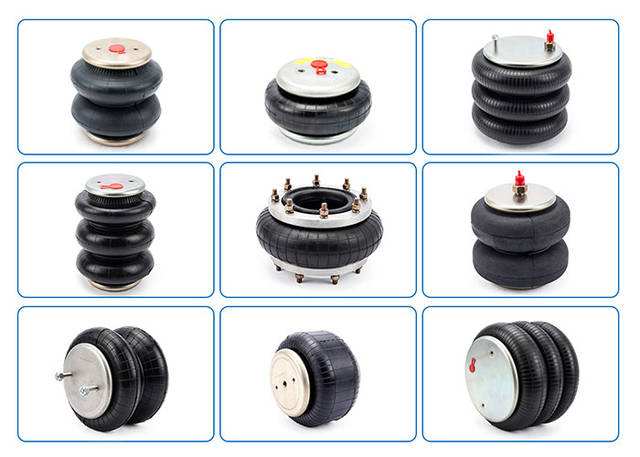
Air spring is a kind of compressed air which is flushed into a sealed container, and its function is embodied by the compressibility of the gas. The common air spring vibration isolator consists of spring body, additional air chamber and height controller.





